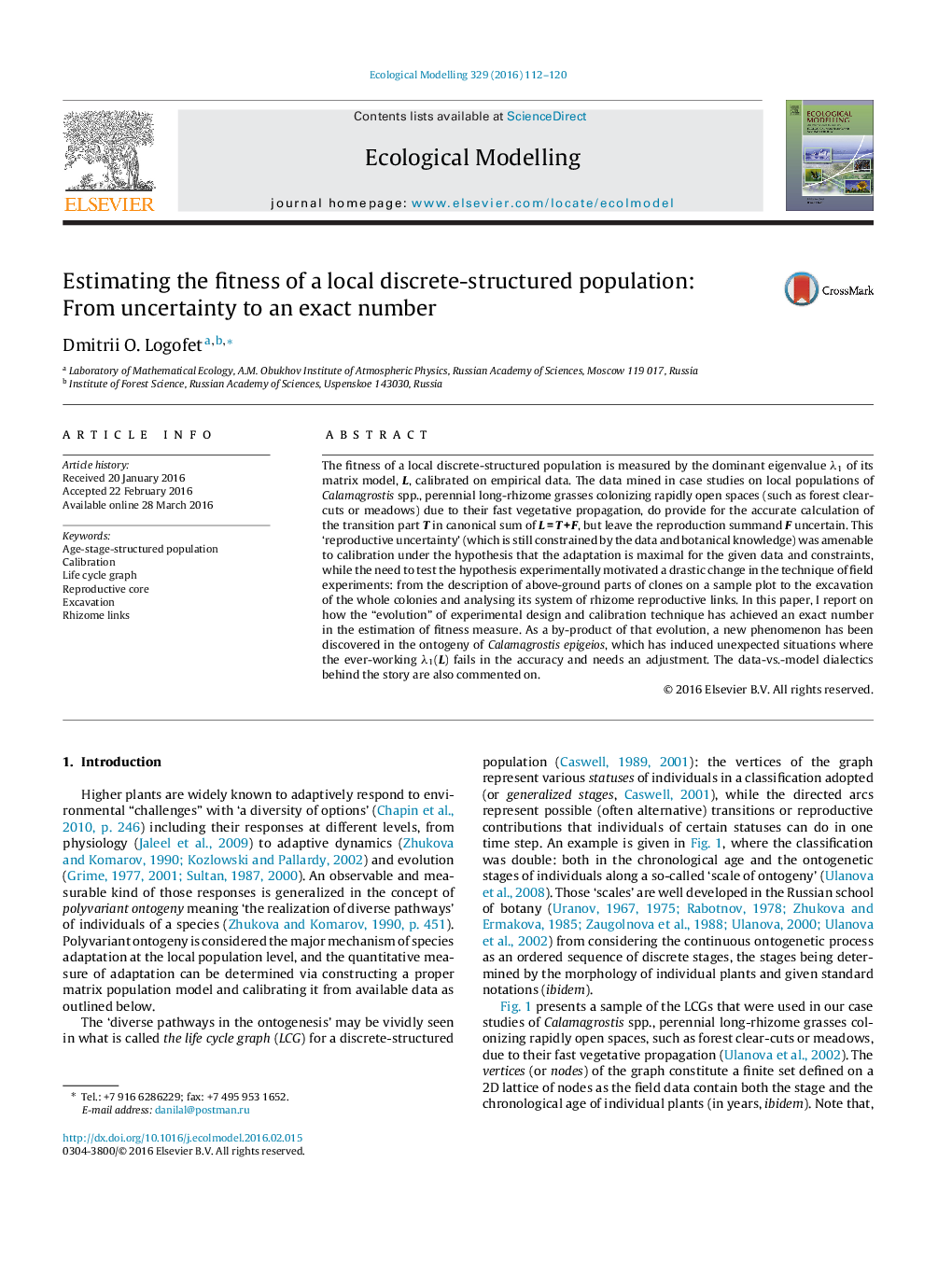| Article ID | Journal | Published Year | Pages | File Type |
|---|---|---|---|---|
| 4375573 | Ecological Modelling | 2016 | 9 Pages |
•Projection matrix for age-stage-structured population needs a new kind of data.•New experiment design to disentangle parent–progeny links in C. epigeios.•Entire colony excavation enables calculating reproductive contributions.•Formerly uncertain reproductive parameters are given exact values.•Former ranges of adaptation measures are reduced to exact numbers.
The fitness of a local discrete-structured population is measured by the dominant eigenvalue λ1 of its matrix model, L, calibrated on empirical data. The data mined in case studies on local populations of Calamagrostis spp., perennial long-rhizome grasses colonizing rapidly open spaces (such as forest clear-cuts or meadows) due to their fast vegetative propagation, do provide for the accurate calculation of the transition part T in canonical sum of L = T + F, but leave the reproduction summand F uncertain. This ‘reproductive uncertainty’ (which is still constrained by the data and botanical knowledge) was amenable to calibration under the hypothesis that the adaptation is maximal for the given data and constraints, while the need to test the hypothesis experimentally motivated a drastic change in the technique of field experiments: from the description of above-ground parts of clones on a sample plot to the excavation of the whole colonies and analysing its system of rhizome reproductive links. In this paper, I report on how the “evolution” of experimental design and calibration technique has achieved an exact number in the estimation of fitness measure. As a by-product of that evolution, a new phenomenon has been discovered in the ontogeny of Calamagrostis epigeios, which has induced unexpected situations where the ever-working λ1(L) fails in the accuracy and needs an adjustment. The data-vs.-model dialectics behind the story are also commented on.
Graphical abstractOutcome of a new technique for field experiments with Calamagrostis epigeios, a perennial long-rhizome grass propagating vegetatively. Thorough excavation of the whole colony with both above- and below-ground parts enables composing an accurate scheme of survival for young rhizomes outgoing from parent plants of various age-stage statuses. The number beneath the image of a parent plant counts all the young rhizomes outgoing from the status-specific parents. Parameters a, b, …, n, o indicate the numbers of alive daughter ramets from those parents. Formerly uncertain, yet constrained, the parameters have been given exact values from the most recent experiment.Figure optionsDownload full-size imageDownload as PowerPoint slide
